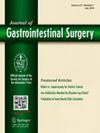The first international experience with histotripsy: a safety analysis of 230 cases
IF 2.2
3区 医学
Q3 GASTROENTEROLOGY & HEPATOLOGY
引用次数: 0
Abstract
Background
Histotripsy is a novel, noninvasive, nonionizing, and nonthermal approach that uses focused ultrasound waves to treat liver tumors. This technology received a de novo Food and Drug Administration grant in late 2023. This study aimed to provide the first report on post-trial real-world clinical safety data.
Methods
Safety outcomes within 30 days of histotripsy were collected after obtaining Food and Drug Administration clearance (December 22, 2023 to July 26, 2024). All centers that performed histotripsy were invited to participate in this study. Complications requiring treatment were graded using the Clavien-Dindo classification and Comprehensive Complication Index (CCI).
Results
A total of 295 patients underwent histotripsy for 510 tumors at 18 centers. The treated liver tumor types included colorectal metastases (n = 140), neuroendocrine tumors (n = 46), hepatocellular carcinomas (n = 31), pancreatic tumors (n = 30), and breast metastases (n = 26). The most common numbers of tumors treated per procedure were 1 (n = 170), 2 (n = 69), and 3 (n = 37). All 8 liver segments were treated for tumors. Safety data were available for 230 patients from 9 centers. Of note, 12 of 230 patients (5.2%) experienced complications of any grade. Most patients (9 [75%]) had minor cases (Clavien-Dindo grade ≤ II). The median and mean CCIs were 0.00 (IQR, 0.00–0.00) and 0.00 (95% CI, 0.00–0.75). All 3 major complications (Clavien-Dindo grade > II [1.3%]) were death due to disease progression. All 3 patients underwent histotripsy with palliative intent for known advanced intra- and extrahepatic diseases.
Conclusion
To the best of our knowledge, this is the first study to report on the real-world therapeutic use of histotripsy for liver tumors. Histotripsy was well tolerated, with few overall complications and rare serious complications, indicating a safety profile that compares favorably with that of other liver-directed and surgical therapies for the treatment of liver tumors. Long-term follow-up data, including oncologic outcomes, were collected.

求助全文
约1分钟内获得全文
求助全文
来源期刊
CiteScore
5.50
自引率
3.10%
发文量
319
审稿时长
2 months
期刊介绍:
The Journal of Gastrointestinal Surgery is a scholarly, peer-reviewed journal that updates the surgeon on the latest developments in gastrointestinal surgery. The journal includes original articles on surgery of the digestive tract; gastrointestinal images; "How I Do It" articles, subject reviews, book reports, editorial columns, the SSAT Presidential Address, articles by a guest orator, symposia, letters, results of conferences and more. This is the official publication of the Society for Surgery of the Alimentary Tract. The journal functions as an outstanding forum for continuing education in surgery and diseases of the gastrointestinal tract.

 求助内容:
求助内容: 应助结果提醒方式:
应助结果提醒方式:


